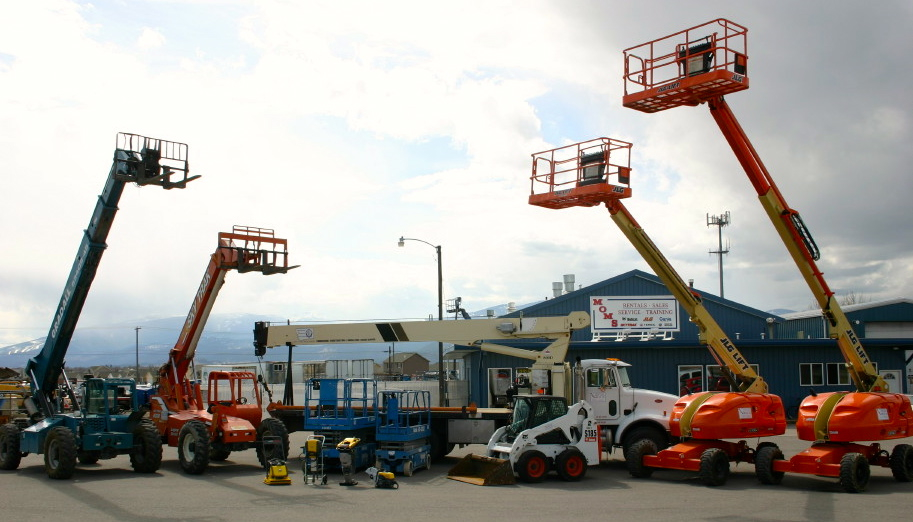Maximize Your Spending Plan by Comprehending the Expenses Related To Building Devices Leasings
Recognizing the full extent of costs connected with construction equipment leasings is critical for optimizing your spending plan. While the first rental cost might seem straightforward, various extra expenditures-- such as transportation, fuel surcharges, and upkeep-- can rapidly accumulate, impacting your financial preparation. Furthermore, being conscious of various fees and the complexities of rental contracts can help avoid unanticipated financial burdens. What techniques can be employed to successfully take care of these costs and guarantee a more effective rental experience?
Review of Rental Expenses
When taking into consideration building tools services, understanding the associated expenses is extremely important for reliable budgeting and job preparation. Rental costs can vary dramatically based upon numerous variables, including equipment kind, duration of leasing, and place. The preliminary rental cost usually shows the devices's market demand and its linked operational capacities, affecting the general expenditure.
In addition to the base rental price, ancillary costs may emerge, such as transportation charges, gas surcharges, and upkeep charges. It is necessary to represent these added expenditures to properly assess the complete price of renting out tools. Additionally, the rental period can impact rates; longer services may get reduced rates, while temporary services might incur higher everyday fees.

Break Down of Rental Rates
An extensive understanding of rental rates is vital for contractors and task supervisors intending to enhance their budgets. Rental prices for construction tools commonly contain numerous components, including base rates, time-based charges, and usage charges.
Base rates are the core charges connected with the rental of the equipment, typically figured out by the type and size of the machinery. These prices can vary dramatically, affected by factors such as equipment demand, availability, and regional market trends. Time-based costs, which may be daily, weekly, or monthly, serve to fit various task timelines and rental periods.
Additionally, rental prices may consist of use fees, which are suitable when devices is made use of past a specified threshold, guaranteeing that the rental company can represent deterioration. Seasonal need fluctuations can also influence rental prices, with peak building and construction periods generally commanding greater prices.
Furthermore, recognizing the rental company's plans pertaining to maintenance and insurance policy can offer further insight right into the general price framework. By examining these elements, service providers can make informed decisions, guaranteeing the choice of rental equipment lines up with both job needs and spending plan restraints.
Additional Charges to Take Into Consideration
Recognizing the complexities of extra fees is essential for service providers to manage their overall service expenses successfully. Beyond the common rental rates, numerous supplemental fees can significantly influence the overall cost of devices leasing. These charges typically consist of delivery and pickup costs, which can vary based upon range and logistics associated with transporting the devices to and from the work site.
Moreover, some rental business may enforce fuel surcharges if the tools is returned with much less gas than when rented out. It is additionally necessary to recognize potential cleansing costs, particularly for customized tools that calls for detailed upkeep after usage.

Completely assessing the rental contract and clearing up these added costs upfront can assist professionals avoid unanticipated expenses and make sure that budget plans remain intact throughout the task lifecycle.
Repair And Maintenance Expenditures
Normal repair and maintenance costs are typically overlooked variables that can dramatically affect the overall expense of construction devices rentals. When renting out equipment, it is critical to think about not only the rental fees but also the potential costs connected with maintaining the machinery in optimal operating problem.
Numerous rental companies consist of basic upkeep as component of the rental agreement; nonetheless, a lot more unanticipated break downs or comprehensive repairs can bring about extra expenditures. It's vital to examine the rental agreement carefully to comprehend what maintenance solutions are covered and what responsibilities drop on the occupant.
Moreover, devices that is not well-maintained can cause ineffectiveness on the task website, possibly enhancing and causing delays project prices. To minimize these dangers, it is recommended to conduct regular examinations and keep open communication with the rental provider pertaining to any concerns that emerge throughout use.
Insurance Coverage and Responsibility Prices
Insurance and liability costs are critical components that can significantly impact the total expenditure of building and construction devices leasings (boom lift rental). These prices make sure that both the rental firm and the customer are secured from prospective financial losses occurring from wikipedia reference accidents, damages, or burglary during the rental period

Additionally, clients need to understand any kind of deductibles or exemptions in the insurance plan, as these can affect possible out-of-pocket expenses. Understanding the terms of any kind of insurance protection is crucial to avoid unanticipated costs. Inevitably, budgeting for insurance policy and liability expenses can aid make sure a smoother rental experience and shield versus economic dangers connected with building projects.
Conclusion
In verdict, a comprehensive understanding of the expenses connected with building and construction devices leasings is necessary for effective spending plan management. Ultimately, informed decision-making concerning devices services contributes to the overall success of building ventures.
Rental prices can differ significantly based on a number of aspects, including devices kind, period of rental, and location (heavy equipment rental). The click here for more info rental period can influence rates; longer leasings may certify for reduced prices, while temporary leasings might sustain higher daily costs
By carrying out complete research study and involving with trustworthy rental business, professionals can properly navigate the intricacies of rental prices, inevitably optimizing their economic resources.
Past the standard rental prices, numerous supplementary charges can considerably impact the complete price of tools leasing. Rental companies typically supply responsibility insurance that covers injuries to 3rd events or damages to residential or commercial property, while devices damage insurance coverage can cover the expense of repairs or replacement if the rented tools is harmed.